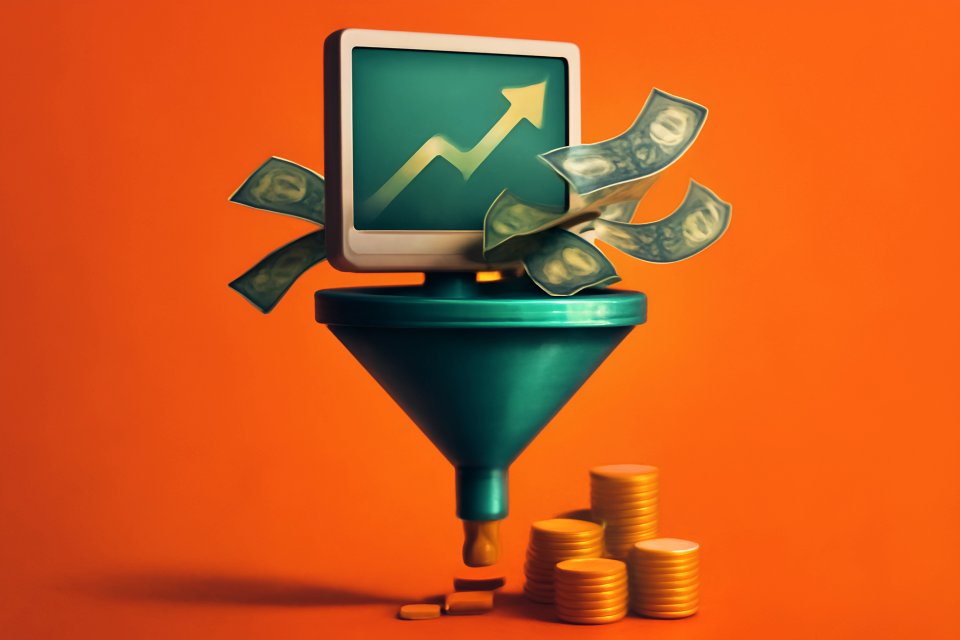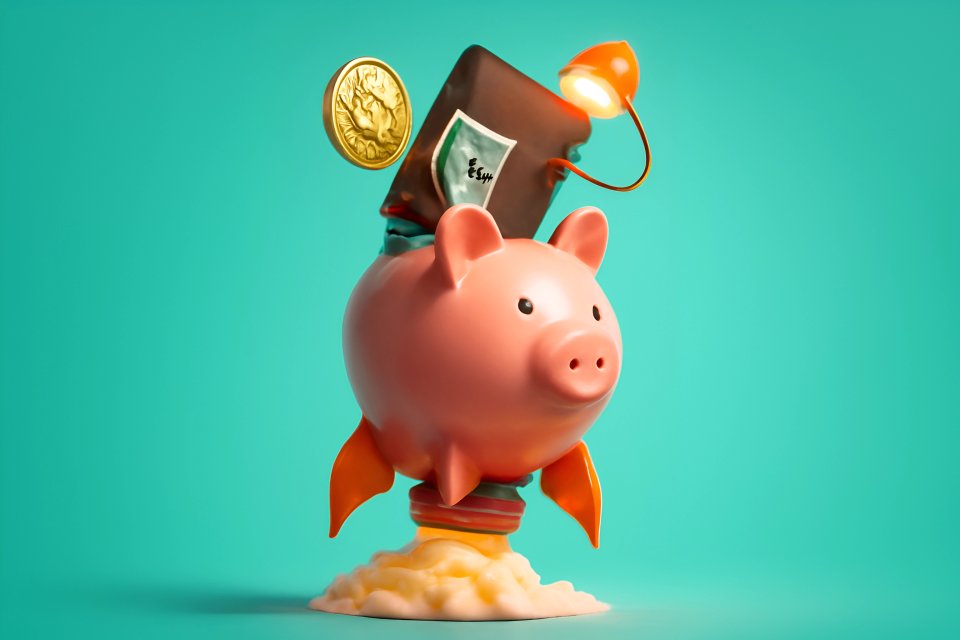
Are you juggling multiple side hustles but still feel like you're one lost client or algorithm change away from financial stress? You’re working harder than ever, but that feeling of true security, of real freedom, remains just out of reach. The problem isn't a lack of effort—it's a lack of strategy.
You've been taught to chase hustles, to add more and more tasks to your plate, hoping that sheer volume will lead to stability. But what if I told you that the secret isn't adding more random jobs, but strategically building a portfolio? Think like a Wall Street investor, but for your online income—diversifying assets, managing risk, and creating a system where your ventures work together for explosive growth.
This isn't just another list of side hustles. This is your framework for designing, building, and managing a diversified online income portfolio. Forget the frantic hustle. It's time to build an empire, one synergistic stream at a time, and create a stable, scalable path to the financial freedom you deserve.
Why a "Portfolio" Approach is the Key to Sustainable Income
Let's be brutally honest. Relying on a single income stream is like balancing your entire future on a knife's edge. One freelance client goes under, one social media platform changes its algorithm, one affiliate program slashes its commissions, and your financial foundation crumbles. This is the single-stream trap, and it’s a recipe for anxiety and burnout.
A portfolio approach shatters this fragile model by building on three powerful pillars: Stability, Scalability, and Synergy. Stability comes from diversification. As financial experts at Fidelity emphasize when discussing income opportunities, spreading your investments across different asset classes is crucial for managing risk. When one of your digital income streams has a slow month, the others compensate, creating a reliable financial safety net that lets you sleep at night.
But it’s about more than just safety; it’s about smart growth. Scalability is your ticket to breaking free from the "time for money" trade. A well-designed portfolio integrates passive and semi-passive elements that earn for you even when you’re not actively working. This is where the real magic happens: Synergy. Your freelance work builds authority that helps you sell a digital product. Your blog drives traffic to your affiliate links. Each piece of your portfolio feeds the others, creating a self-reinforcing cycle of growth that a single hustle could never achieve.
The "Asset Classes" of Your Digital Income Portfolio
Just like a traditional investment portfolio, your digital income portfolio is made up of different "asset classes," each with a specific role. Understanding these roles is the first step to building a balanced and powerful system.
Asset Class #1: Active Income Engines (Your Cash Flow Foundation)
This is your foundation. Your Active Income Engines are the ventures where you directly trade your skills and time for money. Think of freelance writing, virtual assistance, social media management, or one-on-one consulting. Their purpose is simple but critical: to generate consistent, predictable cash flow right now.
This isn't just about paying the bills. This active income is the fuel that powers the rest of your portfolio. According to Bankrate, nearly 40% of Americans have a side hustle, demonstrating the power of active work to generate immediate capital. You can explore dozens of digital side hustles for extra online income to find the one that fits your skills.
Your active income is what you'll use to buy back your time and invest in building your other, more passive assets. It provides the stability you need to take calculated risks and build for the long term. Without a strong active engine, your portfolio has no fuel to grow.
Asset Class #2: Semi-Passive Builders (Your Growth Vehicles)
Here’s where you start building for the future. Semi-Passive Builders are the assets that require significant upfront work but can generate income with far less ongoing effort. This is where you create something once and sell it over and over again.
Consider a niche blog that earns ad revenue, a YouTube channel, or selling digital products like e-books and templates. These are your long-term growth plays. They build an audience, establish your authority, and create assets that appreciate in value over time. The key is to turn your expertise into a product, a cornerstone of digital content creation mastery.
These ventures are the bridge between active work and true passive income. They take the knowledge you've gained from your active hustle and package it into a scalable format. This is how you begin to decouple your income from the hours you work.
Asset Class #3: Passive Connectors (Your Leverage Multipliers)
This is the ultimate goal: earning smarter, not harder. Passive Connectors are the streams that monetize the audience and authority you've already built with your other ventures. They require minimal extra work because they "connect" to your existing assets.
The most common examples are affiliate marketing and ad revenue on established content. You're not creating a new product; you're simply recommending tools you already use or placing ads on content you've already written. According to NerdWallet, there are numerous passive income ideas for 2025 that can be integrated into an existing platform.
Imagine writing a blog post for your semi-passive asset and including links to products you use in your active freelance work. That's a Passive Connector in action. This is where you achieve maximum leverage, turning every piece of content and every client interaction into a potential source of revenue, a key strategy in leveraging social media for affiliate success.
The 4-Step Framework to Build Your Digital Income Portfolio
Ready to move from theory to action? This isn't about luck; it's about a deliberate, repeatable process. Follow this four-step framework to build your portfolio from the ground up.
Step 1: Anchor with Your Core Skill (Establish Your "Blue-Chip Stock")
Every strong portfolio needs a reliable, blue-chip stock. For you, this is a high-value active income stream based on a skill you already possess. This anchor provides the immediate cash flow and stability needed to fund everything else. Don't overthink it.
What service can you offer today that people will pay for?
It could be writing, graphic design, project management, or social media expertise. The goal is to secure a reliable income engine first, a process detailed in our guide on how to launch a profitable side hustle on a budget.
This isn't your forever plan; it's your launchpad. Secure this foundation, and you'll have the resources and confidence to build the rest of your empire.
Step 2: Identify Synergistic Opportunities (Find the Overlap)
With your anchor established, it's time to find the connections. Analyze your active hustle. What questions do your clients always ask? What tools do you recommend over and over? What process have you perfected that others struggle with? The answers are goldmines for your next asset.
This is how you create synergy. For example, a freelance social media manager (Active) constantly gets asked for content ideas. They create a "365-Day Social Media Content Calendar" template (Semi-Passive) and write a blog post reviewing their favorite scheduling tools with affiliate links (Passive).
See how it works? One venture flows directly into the next. You're not starting from scratch; you're building on the momentum and authority you already have.
Step 3: Implement the "Earn and Reinvest" Model
This is the engine of portfolio growth. You must use the reliable income from your Active "Asset Class" to strategically reinvest in your Semi-Passive and Passive streams. This is how you buy back your time and scale your impact.
Reinvestment doesn't have to be a massive expense. It could mean hiring a virtual assistant for five hours a week to handle admin tasks, freeing you up to write your e-book. It could be buying a course on affiliate marketing or paying for premium web hosting to improve your blog's performance. This principle mirrors the advice from BlackRock on compounding and portfolio optimization, where returns are reinvested to generate further growth.
The model is simple: Earn from your service, reinvest in your assets. This disciplined approach transforms your active income from a simple paycheck into an investment in your future freedom. You can start with these low-cost side hustles to maximize your ROI.
Step 4: Balance and Rebalance Your Portfolio Quarterly
A portfolio is a living entity, not a static document. Just as financial advisors at firms like VanEck recommend periodic reviews, you must assess your digital income portfolio regularly. Set aside time every three months to analyze your streams and make strategic adjustments.
Ask yourself these critical questions:
- Which stream is providing the best return on my time investment (ROTI)?
- Where are my biggest growth opportunities right now?
- Do I need to scale back on client work to focus on a product launch?
- Is one of my passive streams underperforming and needs to be replaced?
This quarterly review ensures you're always deploying your most valuable resource—your time—in the most effective way. It keeps your portfolio aligned with your goals and responsive to market changes, ensuring long-term health and growth.
Real-World Examples: What a Digital Entrepreneurship Portfolio Looks Like
Let's make this concrete. Here are two examples of what a well-structured digital income portfolio looks like in the real world.
Portfolio Example #1: The Creative Consultant
This entrepreneur leverages their design and branding expertise across multiple, synergistic streams. Their portfolio is a masterclass in turning a high-value skill into a diversified income machine.
| Asset Class | Venture | Role in Portfolio |
|---|---|---|
| Active Engine | 1:1 Brand Strategy Consulting | High-ticket service providing immediate, substantial cash flow. |
| Semi-Passive Builder | Sells a "Brand Identity Kit" template | Monetizes their core process for a broader audience at a lower price point. |
| Passive Connector | Affiliate income from design software | Earns commissions by recommending tools (Canva Pro, Adobe) they already use with clients. |
Portfolio Example #2: The Niche Content Creator (e.g., a Fitness Blogger)
This creator builds an audience around a passion and then monetizes that attention in multiple ways. Their portfolio is built on authority and community.
- Active Engine: Sponsored blog posts and social media campaigns. They work directly with brands in the fitness space, providing immediate income and reinforcing their authority.
- Semi-Passive Builder: Sells a "30-Day Workout Plan" e-book. They package their expertise into a digital product that can be sold infinitely with no extra fulfillment effort.
- Passive Connector: YouTube AdSense revenue and affiliate links. Their video content earns ad revenue, and their blog posts include affiliate links for recommended workout equipment and supplements, a strategy that can be enhanced by working with micro-influencers for niche markets.
Conclusion: Your Portfolio is Your Path to Freedom
Stop thinking like a hustler and start acting like an investor. Financial freedom isn't about finding one "perfect" online business that will solve all your problems. It's about building a resilient, interconnected system of income streams—a true digital income portfolio that protects you from risk and powers your growth.
You are no longer just a freelancer, a creator, or a consultant. You are the manager of your own financial future, making strategic decisions to build a life of stability, scalability, and freedom. Start with your anchor, relentlessly look for synergistic connections, and reinvest in your own growth. The path is clear.
Now it's your turn. What is your "anchor" income stream right now? In the comments below, share one synergistic idea for a semi-passive or passive stream you could build from it. Let's brainstorm together and take the first step with The Ultimate Checklist for Building a Multi-Stream Income Portfolio.














